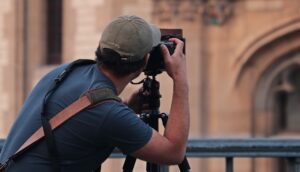
Although the legal consequences of infringement of different IP rights (e.g. copyright, trademarks and patents) are in principle identically regulated in Austria by the corresponding laws, the requirements for protection and acts of exploitation reserved to the proprietor, which are adapted to the market conditions, are fundamentally different depending on the type of IP right. The copyright area is particularly distinct in this respect. The Supreme Court (OGH) now apparently wishes to resolve this difference in a recent decision (OGH 10.12.2020, 4 Ob 165/20y), at least as far as payment claims are concerned.
The decision was based on a long-running legal dispute between a professional photographer (plaintiff) and one of Austria’s largest food retailer chains (defendant). The parties had agreed that comprehensive rights to the commissioned photos would only be transferred to the defendant upon payment of the agreed fee. Although the photographer delivered the photos, the defendant only paid part of the fee. Nevertheless, the defendant introduced a new product line using the photos: a clear violation of the photographer’s exclusive rights under copyright law. Therefore, the photographer asserted his copyright and obtained an injunction from the court to stop the defendant from using the photos.
According to the present decision of the Supreme Court, this prompt assertion of his exclusion rights should lead to a “reduction” of the photographer’s payment claims against the defendant: “The amount of remuneration in the case in question is based on the value of the use of the commissioned photos, i.e., on the reasonable remuneration for a licence to use a work from the perspective of honest parties. The basis of assessment for this are the gross proceeds achieved through the actual use of the commissioned photos, of which the plaintiff is entitled to an appropriate percentage share, which can be estimated according to § 273 ZPO [i.e., the possibility for the Judge to determine the amount of a payment claim in his/her reasonable discretion] […]. In this regard, it is noted that due to the restrictions on the actual use of the commissioned photos in terms of duration and nature, the reasonable remuneration will be lower than the exploitation fee charged by the plaintiff with the fee notes, compared to the comprehensive granting of the exploitation rights under the exploitation agreement.”
However, the Supreme Court may have overlooked a number of things in this decision, which could result in copyright infringers being in a better position than bona fide licensees.
First, copyright law is different from industrial property rights such as trademark or patent law. While the latter are primarily about monetising commercial goods, copyright is based on the idea that artists should have an incentive to create works in the first place. Therefore, artists should be rewarded accordingly for creations that are understood as a reflection of the artist’s personality and not as commercial goods. If contractual partners of artists were better off not paying the agreed fee because the use of the works turned out to be less than agreed, hardly anyone would care about securing the corresponding rights in advance. Rather, exploiters would be likely to resort to litigation, raising the following questions: Would the author have created the works at all without the agreed fee? Wouldn’t exploiters then be speculating whether the author would even realise that his or her works were being exploited without authorisation, and if so, to what extent? Can the author even afford a copyright court dispute?
Furthermore, according to the present Supreme Court decision, a calculation method should be applied that is very rare for copyright: although flat fees for the granting of rights are commonplace in the field of (photo) copyright, the Supreme Court wants to apply a turnover share that is more usual in the field of industrial property rights, especially in the fields of patents and trademarks. However, this does not reflect the reality of the copyright market: while goods infringing patents or trademarks typically generate turnover directly, this is only the case in exceptional cases in copyright law. Typically, copyrights are not exploited by the actual goods sold – except, e.g., for postcards, (photo) books, furniture and the like – but instead the copyright infringement is committed in connection with the advertising of services which generate the turnover (e.g., use of photos on websites, advertising texts and the like) or their decoration (e.g., taking over the design of a packaging) or completely independently of those services (such as the unlicensed use of a computer program). In other words: applying the turnover share model fits other IP rights, such as trademarks and patents, but this compensation model simply does not fit in cases of copyright infringement.
The corresponding proceedings concerning the plaintiff’s compensation for the established infringement of his copyright have now been ongoing for more than five years. However the final clarification of the method of calculating the appropriate remuneration for the unauthorised use of his photographs can only be expected in the next round of proceedings, which most likely will reach the Supreme Court again.
_____________________________
To make sure you do not miss out on regular updates from the Kluwer Copyright Blog, please subscribe here.
Kluwer IP Law
The 2022 Future Ready Lawyer survey showed that 79% of lawyers think that the importance of legal technology will increase for next year. With Kluwer IP Law you can navigate the increasingly global practice of IP law with specialized, local and cross-border information and tools from every preferred location. Are you, as an IP professional, ready for the future?
Learn how Kluwer IP Law can support you.


